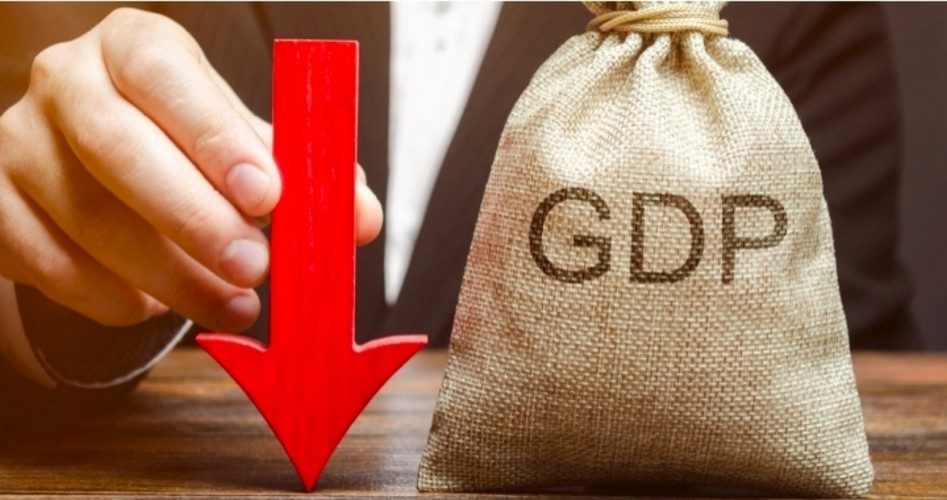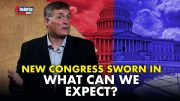
The Congressional Budget Office (CBO) expects the economy to tank and federal deficits to soar as a result of government coronavirus measures, with unemployment remaining high through the end of 2021.
“The economy will experience a sharp contraction in the second quarter of 2020 stemming from factors related to the pandemic, including the social distancing measures put in place to contain it,” CBO Director Phillip Swagel wrote Friday.
Specifically, the CBO projects that gross domestic product (GDP) during the second quarter will fall by about 12 percent, “equivalent to a decline at an annual rate of 40 percent for that quarter.” The agency also forecasts an average unemployment rate of 14 percent for the quarter.
The CBO expects things to improve somewhat in the third quarter as states reopen their economies. GDP is forecast to rise at an annualized rate of 23.5 percent, though the unemployment rate is also projected to hit 16 percent.
”However,” noted Swagel, “challenges in the economy and the labor market are expected to persist for some time.” By the end of the year, the CBO foresees a GDP drop of 5.6 percent and an unemployment rate of 11.7 percent. At the conclusion of 2021, the agency expects GDP to have increased by 2.8 percent and unemployment to decline to 9.5 percent. The CBO says unemployment will average 10.1 percent throughout 2021, which The Hill points out is “higher than its peak during the Great Recession.”
Most of this, of course, is directly attributable to state and local lockdowns. Since March 13, 26.5 million Americans have filed for unemployment compensation. Add to that the 7.1 million jobless prior to that date, and the real unemployment rate is 20.6 percent, “the highest level since 1934,” according to Fortune.
Even that doesn’t tell the whole story. The labor force participation rate — that is, those who are either employed or seeking employment — is expected to fall by about 10 percentage points over the second and third quarters. Chances are some of those people will never be employed again and will become a burden on taxpayers.
Taxpayers are also going to take it on the chin as a result of Congress’ “stimulus” spending spree. The decline in economic activity, and therefore federal revenues, combined with the trillions of dollars in spending laws being passed to offset the effects of government intervention, is projected to boost this year’s federal deficit to a record $3.7 trillion, or 17.9 percent of GDP. The deficit in 2021 is expected to top $2 trillion, or 9.8 percent of forecast GDP. By contrast, 2019’s deficit equated to 4.6 percent of GDP.
Federal debt held by the public is forecast to reach 101 percent of GDP by the end of 2020 — “the first time since World War II that the debt held by the public will be larger than the nation’s economic output in a year,” observed The Hill — and 108 percent of GDP by the end of next year.
Those numbers could easily be revised upward. “House of Representatives Democrats already are crafting a new coronavirus aid bill,” reported Reuters. “Speaker Nancy Pelosi on Friday warned it will be ‘expensive.’”
Predicting the future is always difficult, but in this case, the CBO’s projections “are subject to enormous uncertainty,” penned Swagel. No one knows how long the lockdowns will remain in place — the CBO assumes they will be loosened by June but may stick around to some extent through the first half of 2021 — or whether they will be reimposed if infection rates increase. (This phenomenon, which economist Robert Higgs termed “regime uncertainty,” was one of the primary reasons the Great Depression lasted so long.) Nor can anyone really project just how many businesses will fail or be forced to scale back dramatically as a result of the lockdowns.
Still, the orders clearly have caused and will continue to cause a great deal of economic distress, which is likely to translate into personal distress. Among other things, economic growth is correlated with better individual health, while unemployment is tied to suicide. Politicians who insist that “saving lives” takes precedence over economic growth may well be indirectly taking more lives in the future than they are saving today.
Image: Andrii Yalanskyi/iStock/Getty Images Plus
Michael Tennant is a freelance writer and regular contributor to The New American.


